The History File
June 2019
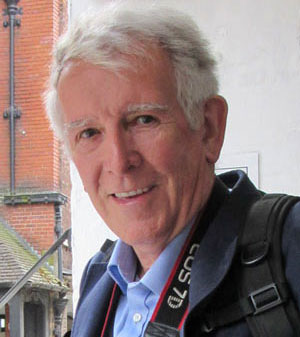
David Cummings
75th Anniversary
Normandy D Day Landings
On the 6th-7th June 2019 we commemorated the 75th Anniversary of an event which probably changed the course of world history, the D Day landings in Normandy. Most of the men taking part never revealed their story, and I have had the great privilege of researching the story of two former Christleton residents, Joe Bowers and Arthur Wright who both took part in the landings. The evidence comes from snippets the men told their families, books and papers of the period and actual evidence.
Sgt. Joe Bowers. 6 Commando
Joe described the events of the morning of the 6th June 1944, the day that saw tens of thousands of British, Allied and American forces land on the beaches of Normandy. The aim was to take the war to the enemy who had entrenched themselves on the French Coast, with only the channel between them and England. Joe was in a group of commandos that reached Sword Beach at 5.30am, after a very rough crossing of the channel. He jumped into the sea from his landing craft up to his neck in water weighed down by his rucksack weighing 80lbs (36kg) which contained extra ammunition for the guns they were carrying. This was on top of their personal weapon and ammunition. Joe told how some of the men around him went down, and were drowned due to the weight of their rucksacks.
Brigadier Lord Lovatt in command of 1st Special Service Brigade issued the order for the brigades role in the landings. The intention was that the 6th Airborne Division and 1st Special Service Brigade would be responsible for holding the left flank of the Allied bridgehead onto the beaches. The Commando Brigade consisted of No3, No4 and 6 Commando(Joe’s unit) and 45 Royal Marine Commando were to land on the extreme flank of the Allied forces on Sword Beach, and to cut inland to join forces with two brigades dropped inland by glider & parachute. No 4 Commando were to destroy a battery and the garrison at Ouistreham and then join the brigade. The rest of the brigade landing 3ominutes after No4 Commando were to fight through the enemy defences to reach and re-inforce brigades of the 6th Airborne Division meeting astride the bridges spanning the River Orne and the Caen Canal, now known as Pegasus Bridge.
Glider regiments of the Airborne Landing brigade would arrive later the same day, descending into the countryside cleared of the enemy.
We can only guess what Joe went through as he landed on the beach, but he described going across Pegasus Bridge after the airborne troops had taken it, and then across crater strewn roads towards Caen. He spoke about this part of the battle taking three days. They met German resistance in front and to the side of them. He recalled that there were about 100 commandos in his troop and they destroyed German defences as they went. We learn that having captured their objectives No4 Commando dug in on a ridge of high ground to the east of the River Orne. Not long after they arrived and started digging-in, the gliders of 6th Airborne Brigade began landing to their rear. Expecting a German counter attack, protective trenches were completed by nightfall. For two days no attack came, but late in the night of the 8th June German infantry were spotted advancing through the nearby woods. Holding their fire until the last minute the Germans were driven back, but this was just the beginning of the fight back and on the 9th June the Germans were seen on the road behind No4 Commando.
After a short battle when D Troop led by Captain Porteous engaged the enemy, and even though they were outnumbered two to one, they charged, killing some and forcing the rest to withdraw. On the 10th June, 4 Commandos position was under heavy artillery & mortar bombardment. Earlier 6 Commando had been heavily bombed, which was followed up by a ground assault that lasted until mid day. Fighting continued most of that day and was taking the toll of the commandos. E Troop only had 20men left from a compliment of 65. Heavy attacks from the Germans continued for the rest of the day, and there was much hand to hand combat. In those few days since landing on the beaches No4 Commando had also lost 50% of its men. Before the landings 1st Special Service Brigade had been told that they would be withdrawn in a few days after the Allies had broken out from the beachhead. Problems whilst capturing Caen meant that the commandos and airborne division had to remain to secure the left flank along the River Orne, They did not get relieved for 82 days, during which they not only held the left flank, but on 18th August started their own break out, with No4 Commando leading, they liberated Bavent followed by Beaumont en Auge, Breuzville & Bonilleville. Here they stayed until 6th September when the brigade was withdrawn back to the UK for 14days leave.
Quarter Master Sergeant Arthur Wright. Royal Scots Grey's
Arthur Wright was a professional soldier initially enlisting in the Royal Armoured Corps in 1941, and served with distinction in the Middle East, North Africa, North West Europe and the British Army of the Rhine. During that time he became a close confidant of Bernard Montgomery, and was one of his close protection officers serving with him throughout the many campaigns from El Alemein to Berlin and who was present at the signing of the Armistice on Luneborg Heath in 1945.
It is rather ironic that whilst serving with Field Marshall Bernard Montgomery in one of the first beach tank landings on the night of 6th June in Normandy, Arthur was injured when a German grenade thrown from behind a hedge from cliffs on Sword Beach hit his tank. The tank exploded and several of his men were killed, but Arthur was rescued and repatriated on a small boat back across the channel to a hospital in England, to recuperate. On his recovery, he gained command of a new tank on 27th July and re entered the campaign through France, Belgium, Holland and Germany, where he remained until well after hostilities to March 1952. In 1957 he married Gertrude Shroeder, an attractive young German lady who had been a translator/interpreter serving the British Army in Magdeborg, a city in east Berlin, in 1945. She had been one of the backroom staff at Luneborg Heath when the armistice was signed. Towards the end of his military service, they moved to Christleton to Home Close, by co-incidence just around the corner from Joe Bowers former home in Sandrock Road.
Gertrude had a very much loved younger brother Peter and was really upset when at the age of 17yrs he was made to train for war with the Hitler Youth movement. At 18 he was conscripted into the German Navy and after 6 months training was sent to join a destroyer. His first view of the sea was when he joined his ship. After less than a years service and only one break at home, Peter then aged 19, was killed off the coast of Normandy on D Day when the destroyer he was travelling in was sunk as it was travelling back to its home port in Germany, not aware that the D Day landings were taking place.
On a personal note my father Trevor, serving with the South Wales Borders, a landing craft driver, also landed in France on Sword Beach on D Day +1. He survived the battles through France, Belgium and Holland, including the battle of Arnhem, and from 17th 20th September 1944 for Njimegen Bridge, who remained in Holland to help repatriate the country until September 1946.
-
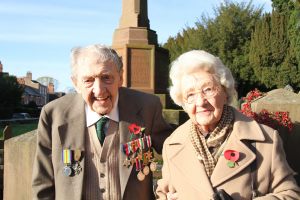
Joe and Eileen Bowers
-
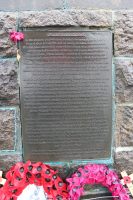
Commando Monument
-
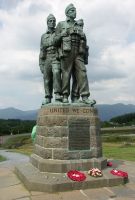
Commando Memorial
-
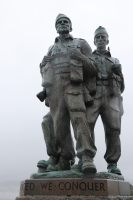
Commando Memorial detail
-
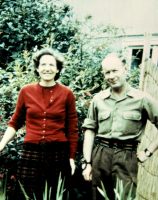
Gertrude and Arthur Wright
-
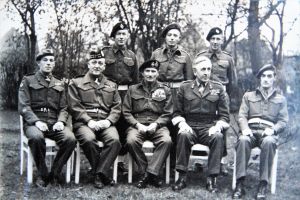
Luneborg Heath F. M. Montgomery and Arthur Wright
-
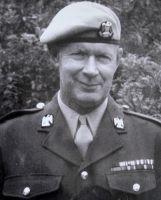
D Day Map Museum at Portsmouth
-
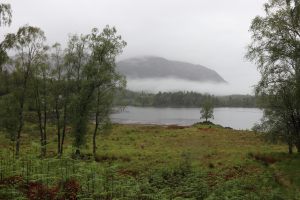
Achnarcarry
-
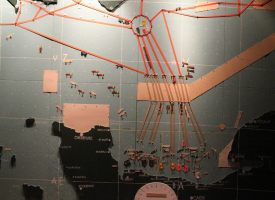
D Day Map Museum at Portsmouth
-
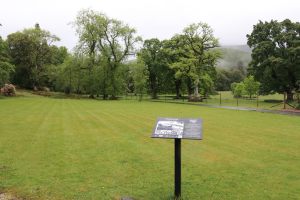
Achnacarry Parade Ground in 2019
-
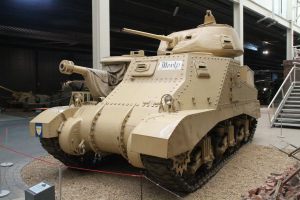
Montgomery's Personal Tank at Duxford
-
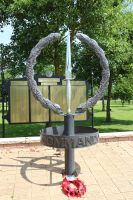
Commando Memorial at the National Arboretum
-
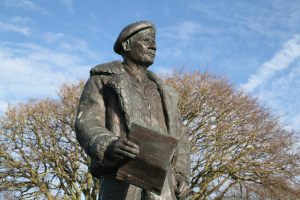
Field Marshall Montgomery - Portsmouth Memorial
-
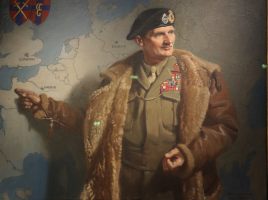
Field Marshall Montgomery - National Portrait Gallery
-
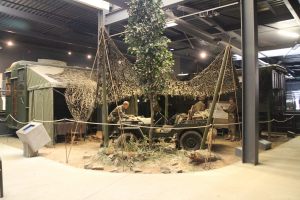
Field Caravans for F.M. Mongomery at Duxford Museum
-
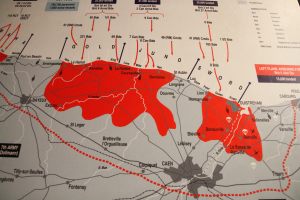
D Day Map Museum at Portsmouth















